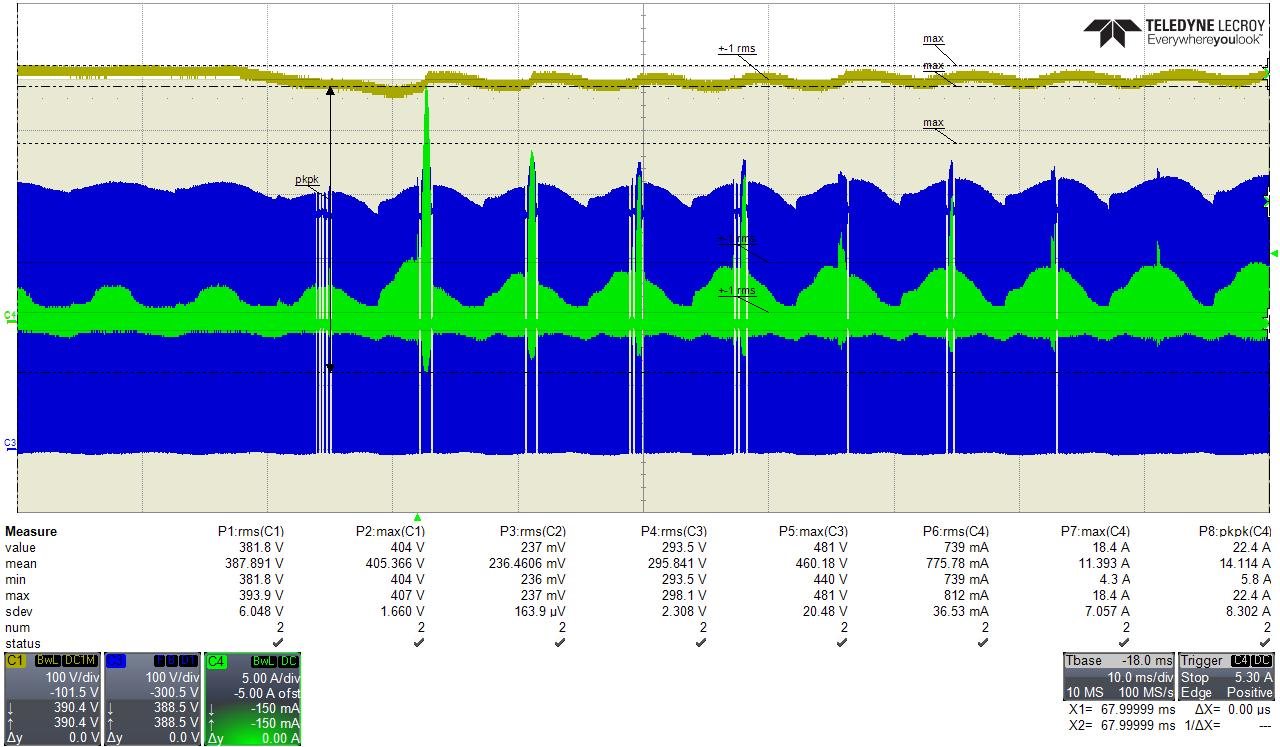Other Parts Discussed in Thread: UCC28064,
Hi TI,
I have load transient issue with UCC28064 at 264Vac.
Switching operation is abnormal. when increase load current dramatically. (100W-->700W or 0W-->200W)
This is not a problem when the input voltage is 90V.
Yellow: PFC out, Blue: Vds_A, Green: Id_A
Could you give me some advice on the solution?


